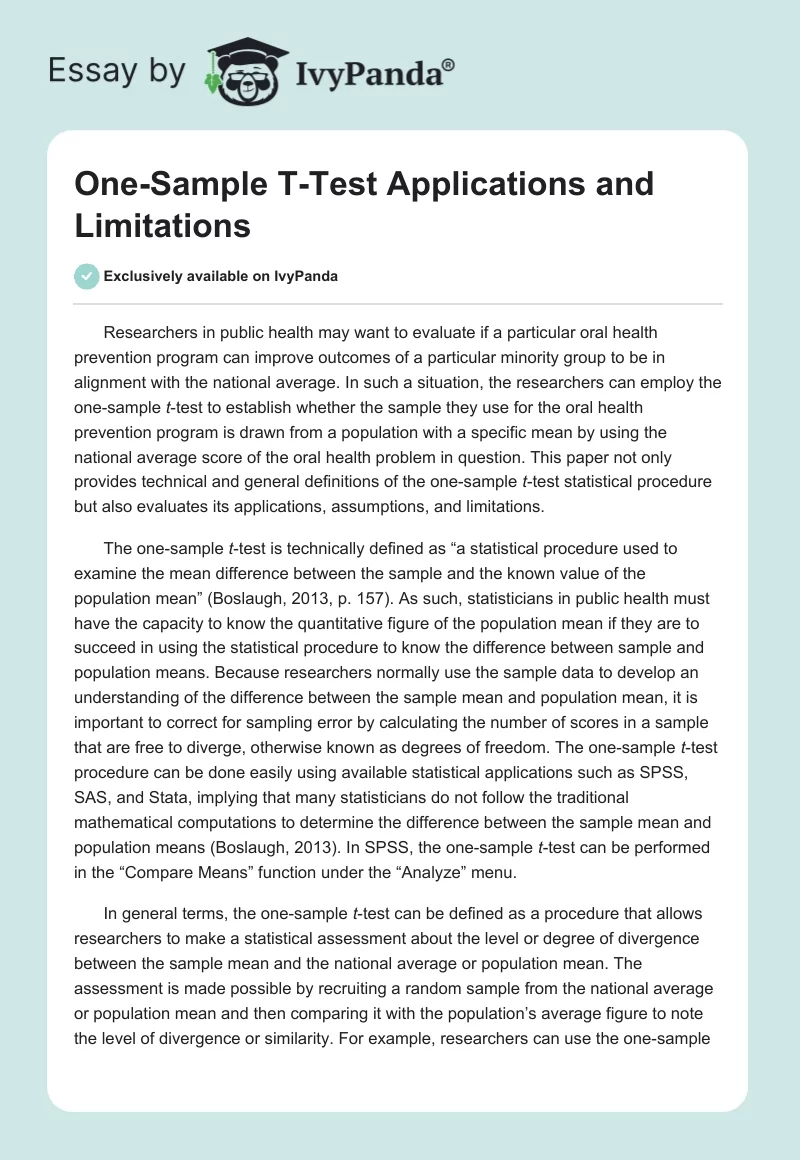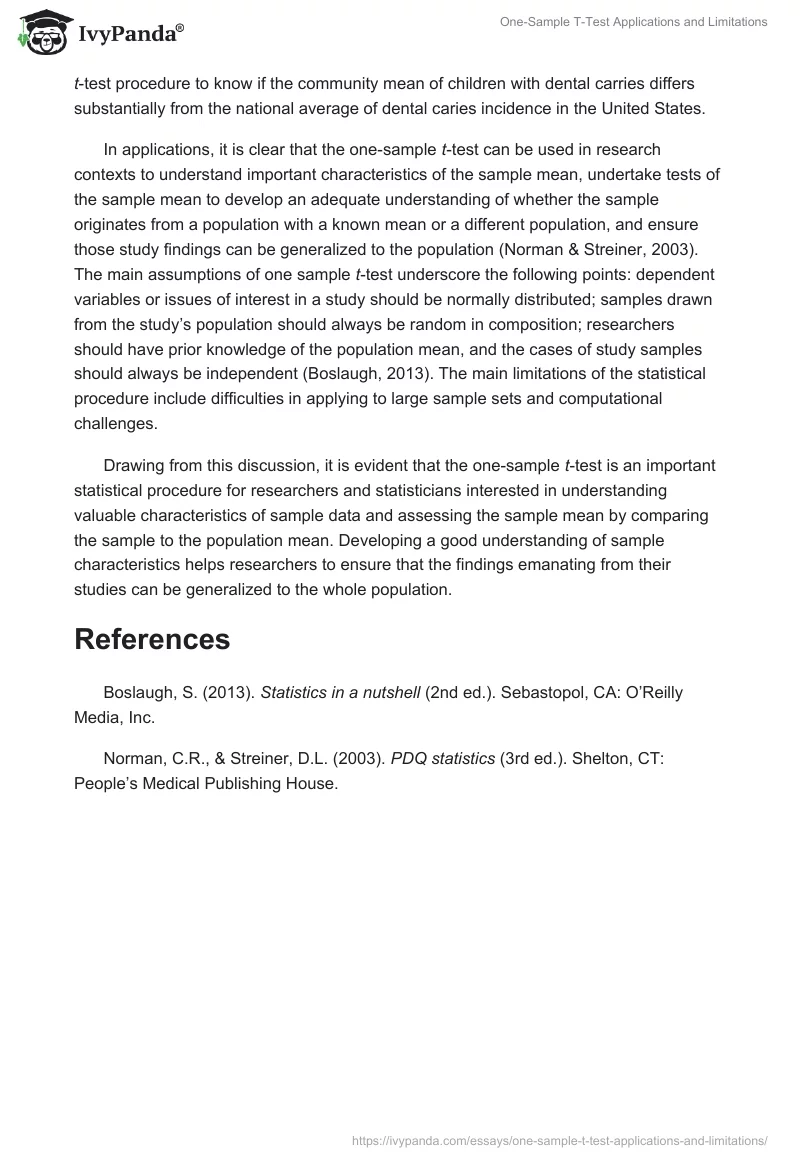Researchers in public health may want to evaluate if a particular oral health prevention program can improve outcomes of a particular minority group to be in alignment with the national average. In such a situation, the researchers can employ the one-sample t-test to establish whether the sample they use for the oral health prevention program is drawn from a population with a specific mean by using the national average score of the oral health problem in question. This paper not only provides technical and general definitions of the one-sample t-test statistical procedure but also evaluates its applications, assumptions, and limitations.
The one-sample t-test is technically defined as “a statistical procedure used to examine the mean difference between the sample and the known value of the population mean” (Boslaugh, 2013, p. 157). As such, statisticians in public health must have the capacity to know the quantitative figure of the population mean if they are to succeed in using the statistical procedure to know the difference between sample and population means. Because researchers normally use the sample data to develop an understanding of the difference between the sample mean and population mean, it is important to correct for sampling error by calculating the number of scores in a sample that are free to diverge, otherwise known as degrees of freedom. The one-sample t-test procedure can be done easily using available statistical applications such as SPSS, SAS, and Stata, implying that many statisticians do not follow the traditional mathematical computations to determine the difference between the sample mean and population means (Boslaugh, 2013). In SPSS, the one-sample t-test can be performed in the “Compare Means” function under the “Analyze” menu.
In general terms, the one-sample t-test can be defined as a procedure that allows researchers to make a statistical assessment about the level or degree of divergence between the sample mean and the national average or population mean. The assessment is made possible by recruiting a random sample from the national average or population mean and then comparing it with the population’s average figure to note the level of divergence or similarity. For example, researchers can use the one-sample t-test procedure to know if the community mean of children with dental carries differs substantially from the national average of dental caries incidence in the United States.
In applications, it is clear that the one-sample t-test can be used in research contexts to understand important characteristics of the sample mean, undertake tests of the sample mean to develop an adequate understanding of whether the sample originates from a population with a known mean or a different population, and ensure those study findings can be generalized to the population (Norman & Streiner, 2003). The main assumptions of one sample t-test underscore the following points: dependent variables or issues of interest in a study should be normally distributed; samples drawn from the study’s population should always be random in composition; researchers should have prior knowledge of the population mean, and the cases of study samples should always be independent (Boslaugh, 2013). The main limitations of the statistical procedure include difficulties in applying to large sample sets and computational challenges.
Drawing from this discussion, it is evident that the one-sample t-test is an important statistical procedure for researchers and statisticians interested in understanding valuable characteristics of sample data and assessing the sample mean by comparing the sample to the population mean. Developing a good understanding of sample characteristics helps researchers to ensure that the findings emanating from their studies can be generalized to the whole population.
References
Boslaugh, S. (2013). Statistics in a nutshell (2nd ed.). Sebastopol, CA: O’Reilly Media, Inc.
Norman, C.R., & Streiner, D.L. (2003). PDQ statistics (3rd ed.). Shelton, CT: People’s Medical Publishing House.


